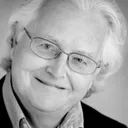Stay in the Loop
BSR publishes on a weekly schedule, with an email newsletter every Wednesday and Thursday morning. There’s no paywall, and subscribing is always free.
"Shakespeare's R & J,' by Mauckingbird Thea

The play's the thing? Or is it the context?
BOB CRONIN
Shakespeare’s R & J offers the novelty of students at a sexually repressed boys’ school putting on a performance of Romeo and Juliet.
First, the good news: The play-within-the-play would bring a smile to the Bard’s lips. Under the direction of Peter Reynolds, Joe Calarco’s spare retelling of the original tragic romance absolutely works. Four men convincingly portray the entire cast of characters– a diversity of roles, genders and social stations. And a piece of red cloth similarly does multiple duty as a dagger, a ring, an old lady’s shawl, and even a stage curtain.
The exceptional cast members– Newton Buchanan, Evan Jonigkeit, Nicholas Park and Conrad Ricamora– draw on their prodigious talents of versatility, power and imagination. Vocally clear, physically dexterous, and energized beyond belief, the members of the company flow in and out of the audience’s focus smoothly and deliver a stellar performance of this tragic masterwork. The tour de force moments— Mercutio’s mad scene, the nurse’s stalling scene, and the Romeo and Juliet love and death scenes— stand out.
Too often Shakespeare productions get weighed down with complicated multiple sets, bejeweled period costumes, and a myriad of props. Stripped to the essentials— four actors dressed alike on a set consisting of three streamer trunks, a back wall of red brick, and superb lighting— the brilliance of Romeo and Juliet shines anew. The illusion that is theater is captured in the imaginations of the audience members. It’s a rare and refreshing experience.
The bad news: What doesn’t work is the frame. Who needs the context of a sexually repressive boys’ school when you’ve got Romeo and Juliet?
To be sure, Joe Calarco’s all-male concept was something of a novelty when Shakespeare’s R & J debuted ten years ago, and the notion bears some validity. Mark Rylance, London’s Globe Theatre’s first artistic director, routinely presented all-male casts of Shakespeare plays during his tenure (1996-2005). In the 1999 film Shakespeare in Love, Tom Stoppard’s fictional account of Shakespeare’s inspiration for Romeo and Juliet portrayed men playing all the parts, as they historically did in the Elizabethan era. But ever since, all-male productions of Shakespeare have proliferated, and the shock value has worn off. Audiences have moved on and their demands have grown more sophisticated. Isn’t that progress, after all?
BOB CRONIN
Shakespeare’s R & J offers the novelty of students at a sexually repressed boys’ school putting on a performance of Romeo and Juliet.
First, the good news: The play-within-the-play would bring a smile to the Bard’s lips. Under the direction of Peter Reynolds, Joe Calarco’s spare retelling of the original tragic romance absolutely works. Four men convincingly portray the entire cast of characters– a diversity of roles, genders and social stations. And a piece of red cloth similarly does multiple duty as a dagger, a ring, an old lady’s shawl, and even a stage curtain.
The exceptional cast members– Newton Buchanan, Evan Jonigkeit, Nicholas Park and Conrad Ricamora– draw on their prodigious talents of versatility, power and imagination. Vocally clear, physically dexterous, and energized beyond belief, the members of the company flow in and out of the audience’s focus smoothly and deliver a stellar performance of this tragic masterwork. The tour de force moments— Mercutio’s mad scene, the nurse’s stalling scene, and the Romeo and Juliet love and death scenes— stand out.
Too often Shakespeare productions get weighed down with complicated multiple sets, bejeweled period costumes, and a myriad of props. Stripped to the essentials— four actors dressed alike on a set consisting of three streamer trunks, a back wall of red brick, and superb lighting— the brilliance of Romeo and Juliet shines anew. The illusion that is theater is captured in the imaginations of the audience members. It’s a rare and refreshing experience.
The bad news: What doesn’t work is the frame. Who needs the context of a sexually repressive boys’ school when you’ve got Romeo and Juliet?
To be sure, Joe Calarco’s all-male concept was something of a novelty when Shakespeare’s R & J debuted ten years ago, and the notion bears some validity. Mark Rylance, London’s Globe Theatre’s first artistic director, routinely presented all-male casts of Shakespeare plays during his tenure (1996-2005). In the 1999 film Shakespeare in Love, Tom Stoppard’s fictional account of Shakespeare’s inspiration for Romeo and Juliet portrayed men playing all the parts, as they historically did in the Elizabethan era. But ever since, all-male productions of Shakespeare have proliferated, and the shock value has worn off. Audiences have moved on and their demands have grown more sophisticated. Isn’t that progress, after all?
Sign up for our newsletter
All of the week's new articles, all in one place. Sign up for the free weekly BSR newsletters, and don't miss a conversation.
 Bob Cronin
Bob Cronin